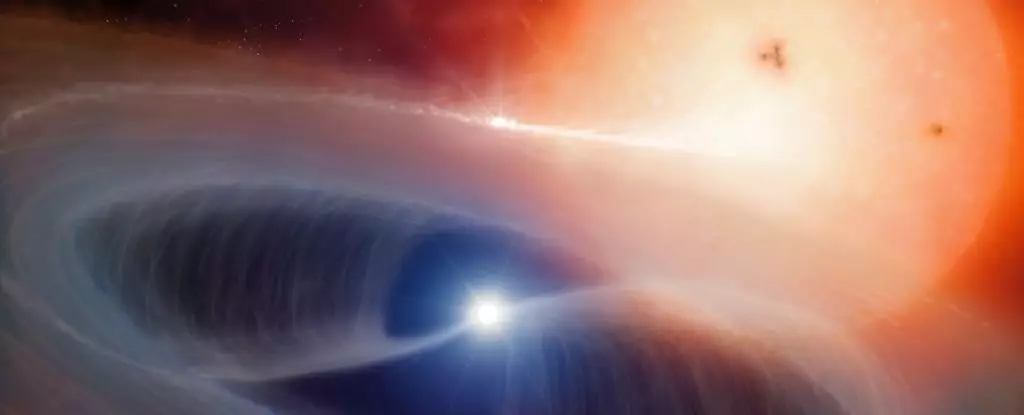The quest to understand the origins of metals in the universe is a captivating journey into the depths of cosmic phenomena. While we generally acknowledge that metals are forged in the intense heat of stellar processes, pinpointing the exact sources and mechanisms behind their creation has proven to be a complex puzzle. Recent advancements in astrophysics have shed light on one of the most enigmatic supernova types: the Type Ic supernova. This new understanding challenges previous notions and elevates the narrative surrounding the birth of heavy elements.
The traditional perspective on Type Ic supernovae posited that their progenitors were massive stars, perhaps even solitary giants that had used up their nuclear fuel. However, an international research team, spearheaded by scholars from Adam Mickiewicz University in Poland, has overturned this viewpoint. Their findings suggest that rather than being the exclusive domain of colossal stars, Type Ic supernovae are often triggered by less massive stars that share a binary relationship. As astrophysicist Michał Michałowski articulates, “The more we investigate the massive stars the more complex they appear.” This complexity underscores the importance of binary interactions in stellar evolution and explosion dynamics.
At the heart of a Type Ic supernova lies a dramatic collapse of a star’s core, indicative of its terminal evolutionary phase. When stars exhaust their hydrogen, they transition into a state where fusion no longer produces enough nuclear energy to counteract the immense gravitational pull acting towards their center. As the core becomes denser, the outer shells of the star are expelled into space in a brilliant explosion, forming a supernova. However, the absence of hydrogen and helium in the remnants of these explosions raises fundamental questions about their progenitors.
Two primary hypotheses have emerged regarding the missing lighter elements. The first suggests that extremely massive stars, over 20 solar masses, produce strong stellar winds capable of stripping away hydrogen and helium from their outer layers. The alternative theory posits a binary companion—a smaller star that siphons off these lighter elements before the final explosion. This newfound perspective highlights how crucial binary interactions are in the life cycles of stars.
The research team utilized a methodical approach to investigate the remnants of supernova explosions. By examining archival data and existing observations of molecular gas, they could infer the mass of the progenitor stars tied to Type Ic supernovae. This examination revealed that the molecular gas—particularly hydrogen—found in the explosions bore a resemblance to that of Type II supernovae, whose progenitors are typically smaller stars. These findings reinforce the notion that Type Ic supernovae emerge from less massive stars with binary companions rather than the previously assumed solitary giants.
Michałowski remarked on the unexpected outcome: “I actually expected progenitors of Type Ic supernovae to turn up to be very massive stars. It turned out that most of these supernovae do not behave in this way.” By flipping the script on the stars responsible for Type Ic explosions, this research not only reshapes our understanding of stellar evolution but also influences how we conceptualize elemental distribution across the cosmos.
The ramifications of these findings extend far beyond theoretical astronomy; they have considerable consequences for our understanding of the universe’s elemental composition. Type Ic supernovae significantly contribute to the cosmic inventory of carbon—a critical building block for life. Recognizing the role of binary companions in these explosions enables astronomers to recalibrate models predicting the abundance of carbon in the universe.
Furthermore, as the research continues, scientists plan to explore the remnants of additional supernovae, aiming to refine their knowledge about the progenitor stars’ characteristics and behaviors. Michałowski emphasized that studying a wider range of supernovae will allow researchers to explore variations, leading to a deeper comprehension of how galaxies and stars evolve in concert.
The ongoing research into Type Ic supernovae illustrates the dynamic interplay between massive stars and their companions, reshaping our understanding of stellar life cycles and element formation. As astronomers utilize advanced observational techniques to gather more data, our insights into stellar evolution and metal production will grow increasingly nuanced. This evolving narrative not only enriches our cosmic understanding but also deepens our appreciation for the complex interrelations that govern the universe at the most fundamental level. In the grand tapestry of cosmic history, the role of binary star systems is becoming ever more evident, reminding us that the universe is indeed an intricately woven wonder.


Leave a Reply